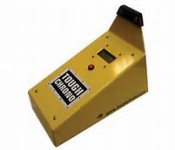FM,
Neither have I. Disappointing. At this point I am wary that the problems have been more than they are saying.
I had a few PM's with a board member a few years ago who was a retired RADAR engineer who had built his own unit, and he shared an example output plot. He'd thought of getting it to market as a product, but his wife had been diagnosed with cancer at that point and he was feeling about like you'd expect in that circumstance, and so had no enthusiasm for it at the time. Now what you heard has me wondering if this might have been the same fellow?
I'm not sure what the manufacturing issues could be? Electronics assembly houses are numerous. It's possible to (and I have) get a good result from a bench prototype of something and then have real problems getting the thing to behave in a stable fashion in production because of a process influence. I note they are now claiming 100 yard maximum range, but the prototype photos went to 200 yards, so that may be a clue that the problems are with performance. Or maybe that's just bullet size dependent.
The basic machine should not be expensive. You can buy mass-produced 24 GHz Doppler RADAR modules that are in the $10 range. Add the circuit board and µP and display for maybe $35-50; something in that same range. The case mold is likely the biggest capital expense for production, unless you are paying employees. Anyway, the price is mainly going to be about recovering the up front costs, at least at first.
But before they can do that, it has to work.
As to picking up the other guy's bullet, the antenna will probably be pretty strongly directional. While it will have a wider sensitivity pattern than the size of an optical chronograph screen, I would not expect it to be fanning out far and wide. I see from the videos that you aim the thing with a molded-in chassis site.

